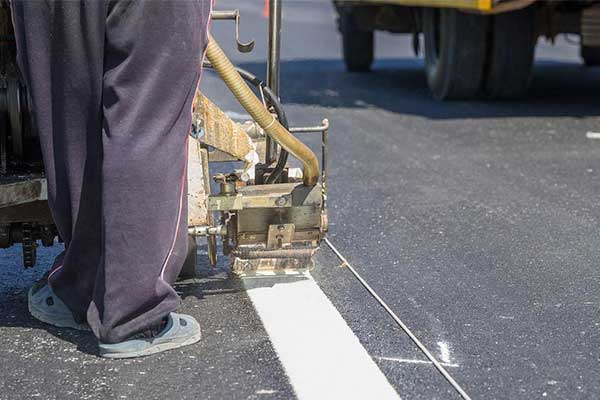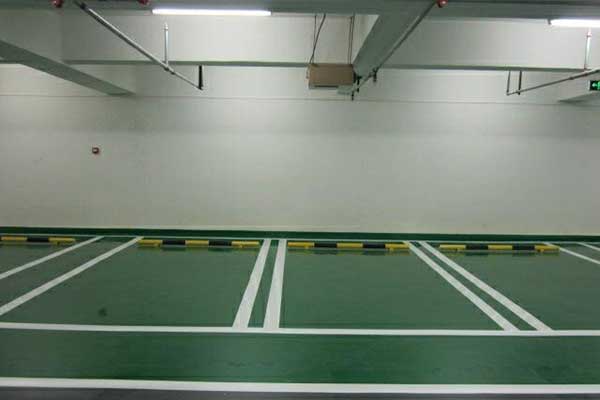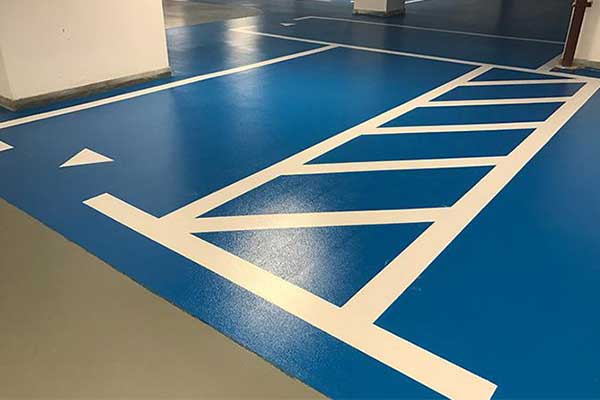What is Road Marking Paint? A Comprehensive Guide
Road marking paint plays a crucial role in ensuring safety, order, and efficiency on our roads. From guiding traffic to delineating lanes, crosswalks, and parking areas, road marking paint serves as a visual language that communicates rules and regulations to motorists and pedestrians alike.

What is Road Marking Paint?
Road marking paint, also known as traffic paint or pavement marking paint, is a specialized coating applied to roads, parking lots, airports, and other paved surfaces to delineate lanes, indicate traffic regulations, and provide guidance to drivers and pedestrians. It’s formulated to withstand various weather conditions, including rain, snow, and UV exposure, while maintaining high visibility for extended periods.
Composition of Road Marking Paint
Road marking paints are typically composed of three main components:
- Pigments: These provide color and visibility to the markings. Reflective pigments, such as glass beads, may also be added to enhance visibility at night or in low-light conditions.
- Binders: Binders hold the pigment particles together and adhere the paint to the road surface. Common binder materials include acrylic, epoxy, and thermoplastic resins.
- Solvents: Solvents help maintain the paint’s viscosity during application and facilitate drying. Environmentally friendly formulations may use water-based solvents instead of traditional volatile organic compounds (VOCs).
Types of Road Marking Paint




- Thermoplastic Paint: This type of paint is heated to a molten state before application, allowing it to bond effectively with the road surface upon cooling. Applied using heat, thermoplastic paint forms a durable bond with the road surface, capable of withstanding heavy traffic and harsh weather conditions.
- Cold Plastic Paint: Cold plastic road marking paint is a two-component system comprising a resin base and a curing agent. It offers excellent adhesion, durability, and visibility, even in harsh weather conditions. Cold plastic paint is commonly used for road markings in urban areas and crosswalks.
- Water-Based Paint: Water-based road marking paint is environmentally friendly and easy to apply. It contains water as a solvent, making it safer for the environment and applicators. Although not as durable as thermoplastic or cold plastic paint, water-based paint is suitable for temporary markings and low-traffic areas.
- Epoxy Paint: Offering exceptional durability and resistance to chemicals and abrasion, epoxy paint is commonly used for indoor applications such as parking garages and warehouses. It provides long-lasting, high-visibility markings.
Applications of Road Marking Paint
- Lane Markings: Road marking paint delineates traffic lanes, including center lines, edge lines, and dashed lines for passing zones, ensuring orderly flow and reducing the risk of collisions.
- Pedestrian Crossings: Crosswalks painted with road marking paint enhance pedestrian safety by clearly indicating designated areas for crossing roads.
- Stop Lines and Symbols: Stop lines and symbols, such as arrows and yield signs, are crucial for controlling traffic flow and ensuring compliance with traffic regulations.
- Parking Spaces: Parking lots and garages utilize road marking paint to define parking spaces, directional arrows, and handicap-accessible areas, optimizing parking efficiency and safety.
Importance of Road Marking Paint

Road marking paint serves several critical functions in transportation infrastructure:
- Safety: Clear and well-maintained road markings help prevent accidents by guiding drivers, delineating lanes, and indicating potential hazards such as pedestrian crossings and junctions.
- Traffic Management: Road markings play a vital role in regulating traffic flow, controlling vehicle speed, and facilitating the orderly movement of vehicles at intersections and roundabouts.
- Accessibility: Markings such as crosswalks and handicap symbols ensure accessibility for pedestrians and individuals with disabilities, promoting inclusivity and compliance with accessibility standards.
- Efficiency: Efficient road markings optimize lane usage, reduce congestion, and improve overall traffic flow, leading to shorter travel times and enhanced productivity.
Conclusion:
Road marking paint plays a pivotal role in shaping modern transportation infrastructure by providing essential guidance, safety, and organization on roadways, parking lots, and other paved surfaces. Its diverse range of types, applications, and benefits underscores its significance in promoting efficient, safe, and sustainable mobility for communities worldwide. As cities continue to evolve and expand, the importance of investing in high-quality road marking paint remains paramount to fostering safer, more accessible, and well-functioning transportation networks.

